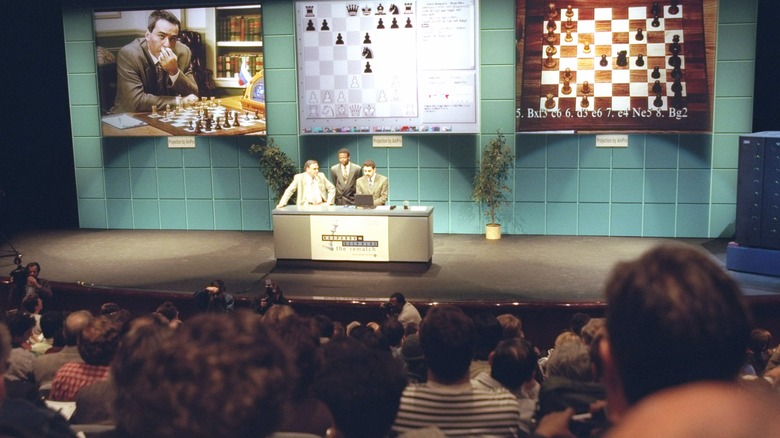This Chess Robot Has Gone Too Far
The idea that artificial intelligence-powered machines could one day rise up and cause harm to humanity has fueled the imaginations of science fiction writers for decades. Several entertainment masterpieces like the "Terminator" series, the "Matrix," and a reasonable number of Elon Musk interviews, have focused on the idea that robots may not be our friends after all. On July 19, a news story out of Russia surfaced that renewed these fears in some people, and spurred some dark jokes about an AI-powered robot lashing out due to spite among others. A large robot arm capable of playing against four people at the same time accidentally took things too far when it broke a 7-year-old boy's finger during a friendly game of chess.
The story has proven particularly interesting in light of some recent claims about artificial intelligence. Some individuals have suggested that certain AI appear sentient, including a now-former Google engineer, a renowned computer scientist, and multiple users of one of the world's most popular chatbot programs, Replika — though, keep in mind, most experts disagree with the belief and say we're many decades away (at best) from anything approaching actual robot sentience.
Robots powered by AI based on neural network models have also been shown to display racist and sexist tendencies, raising concerns about humanity potentially instilling our worst traits in our intelligent machines. This is because neural network models use large, freely available data banks that are based on the contents of the internet. As anyone who has spent any length of time online knows, the internet contains a variety of opinions — not all of which are socially acceptable. In light of all of these claims and worries, it's no surprise that many people were surprised to see video footage from The Moscow Open that showed a robotic arm grabbing a child's finger.
Robot breaks 7-year-old child's finger
One of the best young chess players in Moscow was left with his finger in a cast after a robot he was playing grabbed and broke it. A Telegram video shows the unnamed machine, which can play multiple opponents at the same time, clamping down on the boy's finger. The robot pins the boy's finger to the board for several seconds before a group of bystanders manages to intervene and free the child. In response to the incident, Sergey Lazarev, president of the Moscow Chess Federation, said, "The robot broke the child's finger. This is, of course, bad."
All joking aside, chess-playing machines aren't actually rising up and the odds are high that the child just didn't understand — or wasn't interested in sticking to — the safety rules. Russian Chess Federation Vice President Sergey Smagin highlighted how the boy's responses to the chess robot were lightning quick and how the young man — whose name is Christopher — was not giving the machine time to fully complete its actions (via The Guardian).
Another piece of evidence suggesting the robot may not have been acting out of malice is the fact that Christopher wasn't its only game that day — he was actually the fourth person to play, and no other opponents fell victim to a broken finger. According to Lazarev, Christopher is recovering well, played again the next day, finished the tournament, and volunteered to help with scorekeeping. The boy's parents are in touch with local prosecutors, and there seems to be a widespread sentiment that better safety protocols should have been in place during the match — and, of course, that the robot needs to be updated to make sure this sort of mistake doesn't happen again.
Chess robots have been around for many years
The idea of a chess robot isn't actually something new. In the 1700s, a device called the Mechanical Turk was touring Europe and taking on challenges from chess fans. As the name suggests, the Turk appeared to be a dummy — designed to look like a Turkish man — nestled on top of a 4-foot-tall cabinet. Though the exact mechanics of the device are lost to history, most experts believe that the cabinet actually hid a human that was controlling the Turk's moves.
After building a reputation in the old world, the automaton then set its sights on America, arriving in New York in 1826. According to History.com, several New York City chess players, including a few who were actually accomplished at the game, were soundly beaten by the machine. In addition to the random New Yorkers, the Turk once defeated Napoleon Bonaparte — who tried to cheat and was caught each time. Unfortunately, a museum fire destroyed the machine in 1854, so how the Mechanical Turk actually worked is unknown. It's not all bad news though — the Mechanical Turk's name lives on to this day through Amazon's crowd-working branch, and there are no records of the Turk breaking any children's fingers.
The first genuine machine to beat a chess grandmaster was IBM's Deep Blue, which defeated Gary Kasparov in 1997. Since then, AI has only improved, and a human hasn't beaten a computer at a major chess tournament since 2006 (via IBM).


